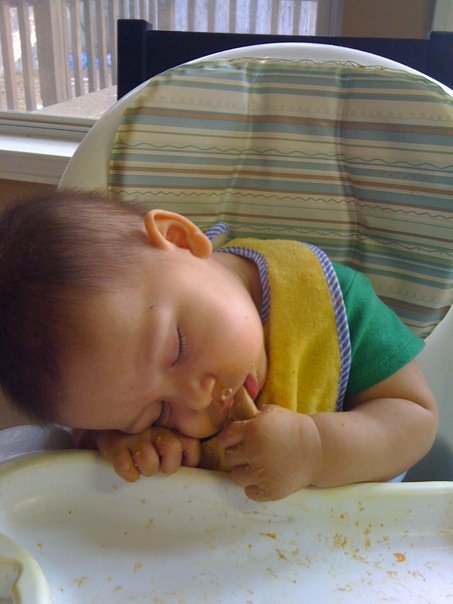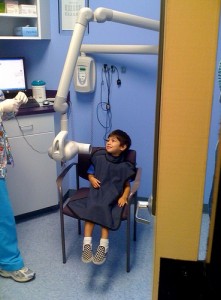
Bedwetting
 Have you ever dealt with a child who wets the bed? We are dealing with the issue of bedwetting right now, and I gotta tell you it is stressful. Our oldest child has trouble staying dry all night. We had him in pull ups at night until this summer when we decided to give it a go and take off the pull ups. We would take him pee at night right before we went to bed and he would stay dry the rest of the night. He was waking up very early because he had to wake up and pee and then couldn’t go back to sleep–but we thought it was great that he was waking up to go.
Have you ever dealt with a child who wets the bed? We are dealing with the issue of bedwetting right now, and I gotta tell you it is stressful. Our oldest child has trouble staying dry all night. We had him in pull ups at night until this summer when we decided to give it a go and take off the pull ups. We would take him pee at night right before we went to bed and he would stay dry the rest of the night. He was waking up very early because he had to wake up and pee and then couldn’t go back to sleep–but we thought it was great that he was waking up to go.
Then we moved to England. Once we arrived in Enlgand everything started off fine. Until school started. Our oldest is in public school and the adjustment of going to school for 6 hours a day and being very tired by the end of the day made bedwetting a bigger issue. He was wetting the bed two times a night most nights. We armed oursevled with washable puddle pads that we put over his flat sheet so that if he did have an accident we could take that off and replace it with a fresh one. That way we weren’t having to change sheets in the middle of the night.
Here is his nightly routine:
- Books before bed.
- Last pee of the night
- Lights out and songs.
- Sleep.
- We take him pee before we go to bed sometime between 10 and 12. We usually try to aim for 10:30 because the chances of him having an accident after 10:30 increase by the minute.
- If we are too late then we change jammies, change the puddle pad and have him empty his bladder. Occasionally, depending on how he is sleeping the accident may get on his comforter, sheets, or blankie. Throw those into the kitchen where the washer is so they can be washed the next morning.
- Sometime between 2am and 4:30, whichever parent wakes up first, will take him pee again. Occasionally we are too late and we have to repeat the above step.
- Rejoice in the morning if he stayed dry all night (and I have no more laundry to do).
Now, this may not be the BEST way to handle bedwetting at night but it works for us for now. I don’t enjoy having interrupted sleep in the middle of the night and dealing with taking him to the toilet but I dislike even more dealing with wet jammies and extra loads of laundry.
A few weeks ago I was getting concerned that maybe there was something else going on with him–a medical problem. I started doing some research (talking to other parents and reading on the web) about bedwetting in school age children.
Here is what I learned:
- It is common for boys especially to struggle with bedwetting.
- Some children don’t produce the hormone that supresses the body from making urine at night until they are older. In some cases, not until puberty.
- It isn’t their fault. They aren’t doing it on purpose. They can’t help it. They aren’t lazy.
- Using things like sticker charts won’t really be helpful because bedwetting is not something that children can control. It isn’t the same thing as using a sticker chart for thumb sucking or doing chores.
- Use empathy and love when your children have an accident. Use all your might to not show any anger toward your child if they have an accident.
- Stress makes bedwetting worse. (In our case starting school was making it worse for our child. Showing anger and frustration about bedwetting can also make it worse.)
- If you suspect a medical problem, take the child in for a check up and talk to the pediatrician.
- Some websites said that taking them to the toilet at night doesn’t really teach the child anything–it more trains the parent than anything else.
- If your child is old enough for sleepovers you can ask your doctor about a prescription the child can take to not wet the bed. Or teach your child how to discreetly use pull ups to avoid being embarrassed about needing them at night.
- Encourage your child when he has an accident and tell him he will grow out of it. (It doesn’t bother our child that he has accidents at night. He isn’t embarrassed about it for the time being but I suspect that he will get there if this issue doesn’t resolve itself in the next year.)
- Take heart, you aren’t the only parent out there dealing with extra laundry due to bedwetting!
How have you dealt with bedwetting? What has worked for you?
Share the fun: Email + Del.icio.us + Digg + Technorati


 Recently, I have found myself becoming a “paranoid parent” with regard to my children’s health. All the constant flooding of the news about the Swine Flu or H1N1 Flu has really got me worried. It is especially worrisome to me because our son, who has Type 1 Diabetes, is at a greater risk of complications should he contract one of these viruses.
Recently, I have found myself becoming a “paranoid parent” with regard to my children’s health. All the constant flooding of the news about the Swine Flu or H1N1 Flu has really got me worried. It is especially worrisome to me because our son, who has Type 1 Diabetes, is at a greater risk of complications should he contract one of these viruses. 
 My husband and I are saying “no” to a lot of invitations lately. A few months after my first daughter was born I read
My husband and I are saying “no” to a lot of invitations lately. A few months after my first daughter was born I read 
![momcrowd_abidingmonday2_300x215[1] momcrowd_abidingmonday2_300x215[1]](../wp-content/uploads/2009/09/momcrowd_abidingmonday2_300x21512.png) Worry has been following me around lately. I know how to combat it –
Worry has been following me around lately. I know how to combat it – 
 When I was in college, I started a job at a pediatric dental office. I continued working there after I graduated, until we moved overseas. I did a lot of admin stuff as well as chair-side (assisting the hygienist or the doctor), and I loved how so many parents brought their kids to our office and asked great questions about dental health. Here are a few things I learned from the doctors during my years there:
When I was in college, I started a job at a pediatric dental office. I continued working there after I graduated, until we moved overseas. I did a lot of admin stuff as well as chair-side (assisting the hygienist or the doctor), and I loved how so many parents brought their kids to our office and asked great questions about dental health. Here are a few things I learned from the doctors during my years there:



